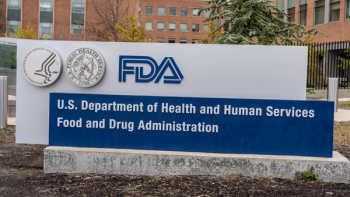
Using Social Networks to Increase Sales
Social networks existed long before Mark Zuckerberg came along. What hasn’t existed until recently are the tools, metrics and case studies necessary to understand how physicians influence each other within professional networks, and how these relationships can be used to change prescribing behavior.
Social networks existed long before Mark Zuckerberg came along. What hasn’t existed until recently are the tools, metrics and case studies necessary to understand how physicians influence each other within professional networks, and how these relationships can be used to change prescribing behavior.
At the Activate Networks Summit in Boston on Tuesday, a mix of social network scientists, pharmaceutical executives, academics and others convened to discuss the power of social influence, online and offline (but mostly offline). The key insight for pharma brand marketers, repeated by many speakers throughout the day, was that relationships of influence, not individual physicians, are where the big opportunities lie for changing behaviors. But how are those relationships identified and targeted?
By understanding the patient, or more specifically, who treats her/him. Instead of the timeworn tactic of purchasing a list of high-decile prescribers and spending a majority of the available resources targeting them, it’s better to start with de-identified patient claims data to determine “patient flow,” or which physicians have patients in common. From there, quantifying the level of influence between physicians based on how a patient is treated in toto leads to the identification of connections between physicians. “One physician may not write as many prescriptions, but if he’s the nexus of a network [between many other docs], that’s incredibly important,” said David Moore, senior group manager, marketing science at Genentech.
Colorful dot graphs abounded at the summit; Moore’s presentation featured a network graph of cardiologists, endocrinologists and primary care physicians, and the web of influence each physician spins. Smaller nodes or clusters of connected physicians (in terms of their relationship to each other in a social network) will often behave in very similar ways. For example, primary care docs are “reticent to change a therapy initiated by a specialist…they reinforce that regimen,” said Moore. By targeting the physicians with the most connections and influence, marketers can move the needle on a groups of physicians, without the need to use up resources on each individual. Homophily, or in other words, birds of a feather flock together, is common to all social networks.
There are many ways to gauge influence, and Activate Networks didn’t give out all of the secrets of its algorithms; influence is fluid and goes both ways, and harnessing the science of social networks means continuously looking at how physicians are treating patients over time, and how they interact with peers and colleagues. Pete DeWan, co-founder, chief scientific officer and VP analytics at Activate Networks told PharmExec that in addition to patient claims data, other criteria are also used to identify the strength of influence between one physician and another. But, he said, surveys prove that the insights gleaned from the company’s sociometric profiles of physicians are on the money, 80 percent of the time.
“Trust is a powerful tool for convincing someone to do something different,” said John Eichert, Principal at Rivermark, a marketing strategy firm servicing pharma and biotech companies. Without knowing who trusts whom within a given social network of physicians, companies won’t identify the right leaders, which means wasted dollars. Sales reps, for example, often choose the speakers and attendees for physician meetings, despite the fact that reps are “a poor judge of trust and leadership,” said Eichert. They get it right about half the time, he said. “Customers should identify speakers, not sales reps.”
The prevailing consensus of the summit was that social factors influence behavior, to a larger degree than most people recognize. By identifying the structures of social influence among physicians, and targeting the most influential docs, brand marketers can do more with fewer sales reps.
Newsletter
Lead with insight with the Pharmaceutical Executive newsletter, featuring strategic analysis, leadership trends, and market intelligence for biopharma decision-makers.





